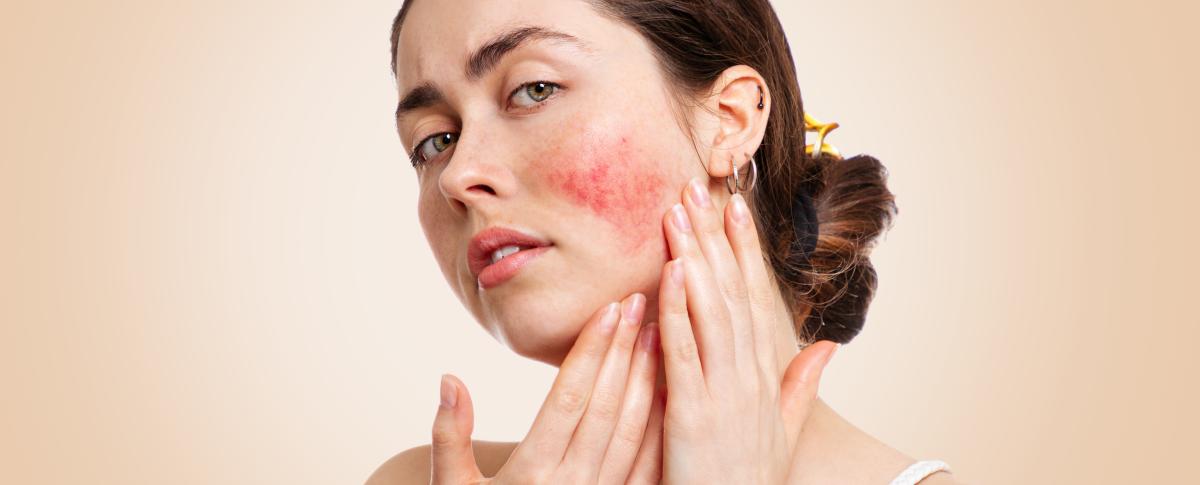
Red In The Face? The Differences Between Acne and Rosacea
Note to parents and teens who often find themselves with red noses or cheeks even when they’re not sunburned: You might be suffering from rosacea.
Rosacea, a chronic inflammatory skin disease that is sometimes confused with acne, often presents with butterfly-patterned blushing across the center of the face. And because it can also bring pimple-like bumps, “the papular form of rosacea can mimic acne,” says Dr. Kally Papantoniou, a New York dermatologist.
She cautions that confusing rosacea with acne can cause problems because some treatments for acne can worsen rosacea.
So how do I tell acne and Rosacea apart?
Acne usually strikes younger age groups and produces whiteheads and blackheads that include the jaw and neck area. Rosacea, on the other hand, typically occurs after age 30, explains Dr. Papantoniou. In addition to redness across the center of the face, other symptoms include spidery broken blood vessels, bumps under the skin and thickening of the skin.
What causes Rosacea?
Unlike acne, which stems from oil, clogged pores, bacterial growth and hormones, rosacea is more often connected to the blood vessels and the immune system. Dr. Papantoniou notes that sunlight, stress, spicy foods, alcohol, cold or hot weather, hot beverages and, for some sufferers, gluten can trigger flare-ups.
What can I do about Rosacea?
It’s important you receive treatment that is tailored to your skin, so seek a physician’s advice.
“Treating rosacea is not as simple as targeting bacteria or inflammation alone,” says Dr. Papantoniou. But with the right regimen a doctor can help reduce that redness quickly and effectively.